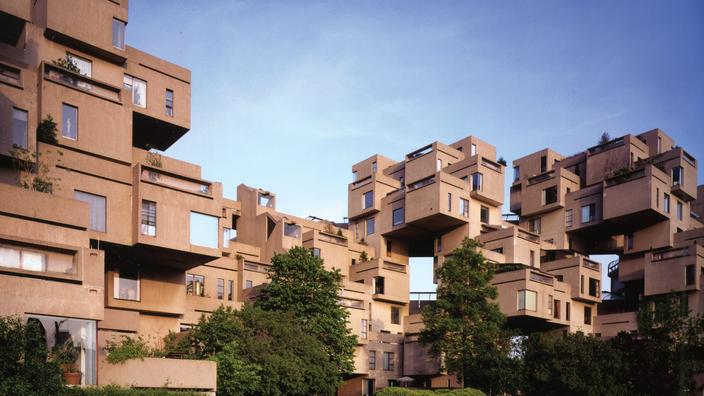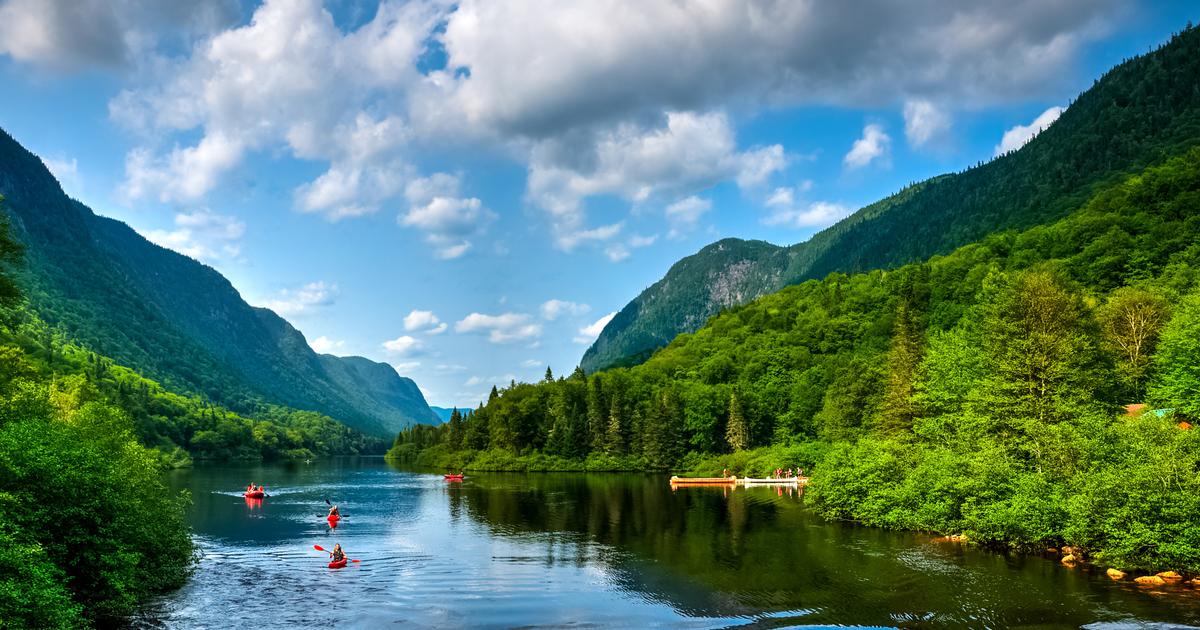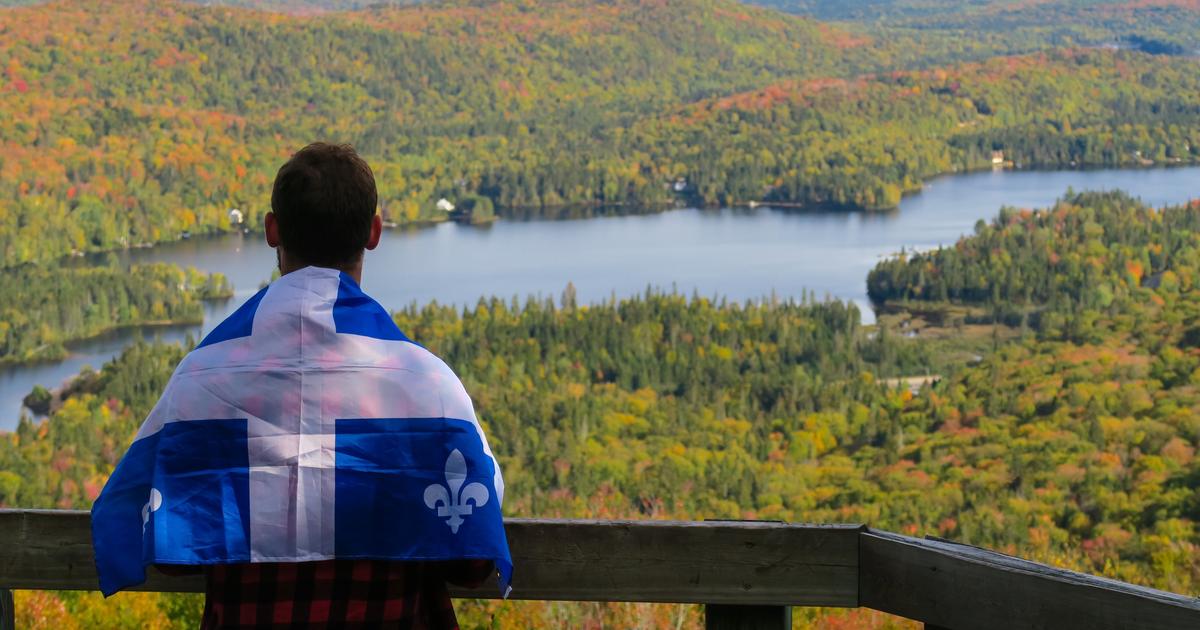Habitat 67
To discover
Partner stay in Canada |
12 days: Splendors of Eastern Canada
This astonishing and extravagant structure, pictured by the Israeli-born architect-urban planner Moshe Safdie for the 1967 World's Fair, certainly attracts attention. Right off the bat, Safdie was just 23 when he conceived it. Built in the Cité-du-Havre district, on an artificial peninsula created in large part from excavation material from the Montreal metro, it has become an emblem of innovative housing.
Habitat 67 is made up of 354 cubic prefabricated concrete modules stacked on top of each other to form three 12-storey pyramids.
This unique organization of space forms 148 dwellings with suspended terraces, glazed walkways, pedestrian streets, skylights and monumental elevator columns.
Unusually, the entire ventilation, heating and plumbing system is located in the floors of the modules.
A stationary wave at the foot of Habitat 67 allows river surfers to indulge their passion.
Shan Canuel
Safdie wanted to combine the style of the private detached house with that of an apartment building while bridging the river and the city. Listed as a historic monument, it has marked the imagination and modern architecture and remains, whether we like it or not, it is an exceptional building. You can see the complex from the Old Port. It remains a private property for its residents, but it is also possible to visit it from May to October and discover the four modules of Moshe Safdie's luxurious apartment. At the foot of Habitat 67, another curiosity will perhaps arouse your attention: the Sainte-Marie current creates a stationary wave on the river which allows surfers to indulge in their favorite sport.
Habitat 67, guided tour by reservation only, Habitat 67, 2600, avenue Pierre-Dupuy, Montreal, Quebec, H3C 3R6.
The Biosphere
The Biosphere, former United States pavilion during Expo 67, now an environment museum.
Eva Blue - Tourisme Montréal
This geodesic dome was designed by a pioneer in environmental issues and sustainable architecture, Richard Buckminster Fuller.
Famous visionary, Fuller believed in particular that certain cities of the future could exist under such domes, in particular in the Arctic, in particular because of their resistance.
At 20 stories high, it is the tallest of its kind in the world and is one of the few outstanding architectural pieces in the metropolis. It shows two-thirds of a sphere whose steel frame was covered with 1900 acrylic panels. This structure was first, in particular, the pavilion of the United States during the World's Fair of 1967 before it was engulfed in flames in 1976. Welding work caused a fire and the coating of acrylic then caught fire at high speed, so that in less than half an hour, the fire got the better of the covering. The metal structure however remained intact, only about fifty of the 24,000 steel tubes were deformed.
Since this superb geode has changed its face, it has rediscovered an ecological vocation, first of all by becoming, in 1990, a place devoted to the enhancement of the water and the ecosystem of the Great Lakes and the river.
It now houses the Environment Museum where various exhibitions raise awareness of major contemporary environmental issues.
You can discover an immersive projection of moments lived in nature presented on a 360-degree screen.
The Biosphere is bathed in a magnificent environment, in the heart of Jean Drapeau Park on Île Sainte-Hélène.
Biosphere, Jean Drapeau metro station, $ 21.50 adult, $ 59 family.
"Underground Montreal"
One of the many corridors in Montreal's underground pedestrian network.
Arcpixel.com
For the vast majority of Montrealers who only go through it on a daily basis, it responds above all to a certain pragmatism and rather generates a shrug of the shoulders as to the interest it arouses. However, the “underground Montreal” fascinates tourists.
It was first part of the city's modernization plans of Mayor Jean Drapeau during his election in 1960 when he promised a metro for Montreal. Then the first indoor pedestrian network materialized in 1962 with the construction of a link between the Central Station, the Queen Elizabeth Hotel and Place Ville-Marie. In 1966, with the creation of two metro lines under the existing streets, large underground mezzanines located at basement level were added. The City of Montreal then granted concessionaires who build shopping centers. Expo 67 also fostered the development of underground links between the various buildings in the city center and the “underground Montreal”.was then built from odds and ends according to the construction of the various buildings in the city center with a new major boom during the 1976 Olympic Games.
The most spectacular phase was undoubtedly the setting on stilts of Christ Church Cathedral to allow the digging of its foundations and the installation of a shopping center.
It is also a good entry point to access the famous Reso, Montreal's underground pedestrian network, but be aware that it has 200 entrances.
In addition, there are 32 kilometers of pedestrian corridors, 2,000 shops, hotels, a few museums and more than 200 restaurants, which make it the largest network of indoor galleries in the world.
Public art is also predominant: there is a fragment of the Berlin Wall, an epic glass roof by Frédérik Back paying homage to the history of Montreal and even a festival.
Better to protect yourself with a card available online.
Underground Montreal
Gibeau Orange Julep
On Wednesday evenings, vintage car enthusiasts gather in front of the Gibeau Orange Julep. Robert walker
A retro Montreal establishment that has also become a tourist attraction on the edge of a highway, this huge orange ball is an icon of Montreal's kitsch heritage. It was first in 1932 that restaurateur Hermas Gibeau opened his first Orange Julep restaurant. We must then go back to the time when the orange was an expensive exotic fruit and not very accessible to the working class. In order to reduce the cost of orange juice, Gibeau developed a recipe by diluting it with milk and eggs, which will give the drink a creamy and smooth character. The craze for juice was palpable and Gibeau opened a second restaurant in 1945 on Boulevard Décarie. The restaurant moved in 1966 due to the expansion of the Decarie Expressway and will adopt its current silhouette,or an orange fiberglass sphere 40 meters in diameter.
Until 2005, waitresses were there on roller skates, delivering orders directly to the car windows.
Today, the retro establishment is still recognized for its
fast-foot
classics
.
We will appreciate these hot dogs, these burgers and poutines and this famous creamy orange drink.
The place has undeniably become a popular spot for Instagrammers and, on Wednesday evenings, it becomes a meeting place for many vintage car enthusiasts.
Close to Namur metro station, Gibeau Orange Julep, 7700 boulevard Décarie, Montreal, H4P 2H4.
Bota Bota
The Bota-Bota, a ship converted into a spa on the water, moored in the Old Port of Montreal.
Marie-Reine Mattera
The activity that one practices there is not in itself surprising, but the setting is quite unusual. The Bota-Bota is the only floating spa in the world nestled aboard a 55-meter boat docked in the Old Port of Montreal. The ship is actually a ferry that was built in the 1950s and that shuttled between Sorel and St-Ignace de Loyola. It then bore the name
Arthur-Cardin
and could carry up to fifty cars, in addition to their passengers. The Société des Traversiers ceded the ship to the artistic domain and the boat became the Bateau-Théâtre l '
Escale
which sailed on the St. Lawrence River, then on the Richelieu River, and presented on board plays, receptions and shows. .
Since 2010, he has invited passengers to take good care of the crew.
Whirlpool pools have been installed on the various decks and, inside, relaxation areas are set up in the portholes.
The changing rooms are located in the old engine rooms.
Interestingly, the energy needed for heating and cooling is completely green and renewable and is extracted directly from the St. Lawrence River, through an energy exchange process similar to geothermal energy.
Bota-Bota, Square Victoria metro station.
A reservation is required for the water circuit and for the treatments.







